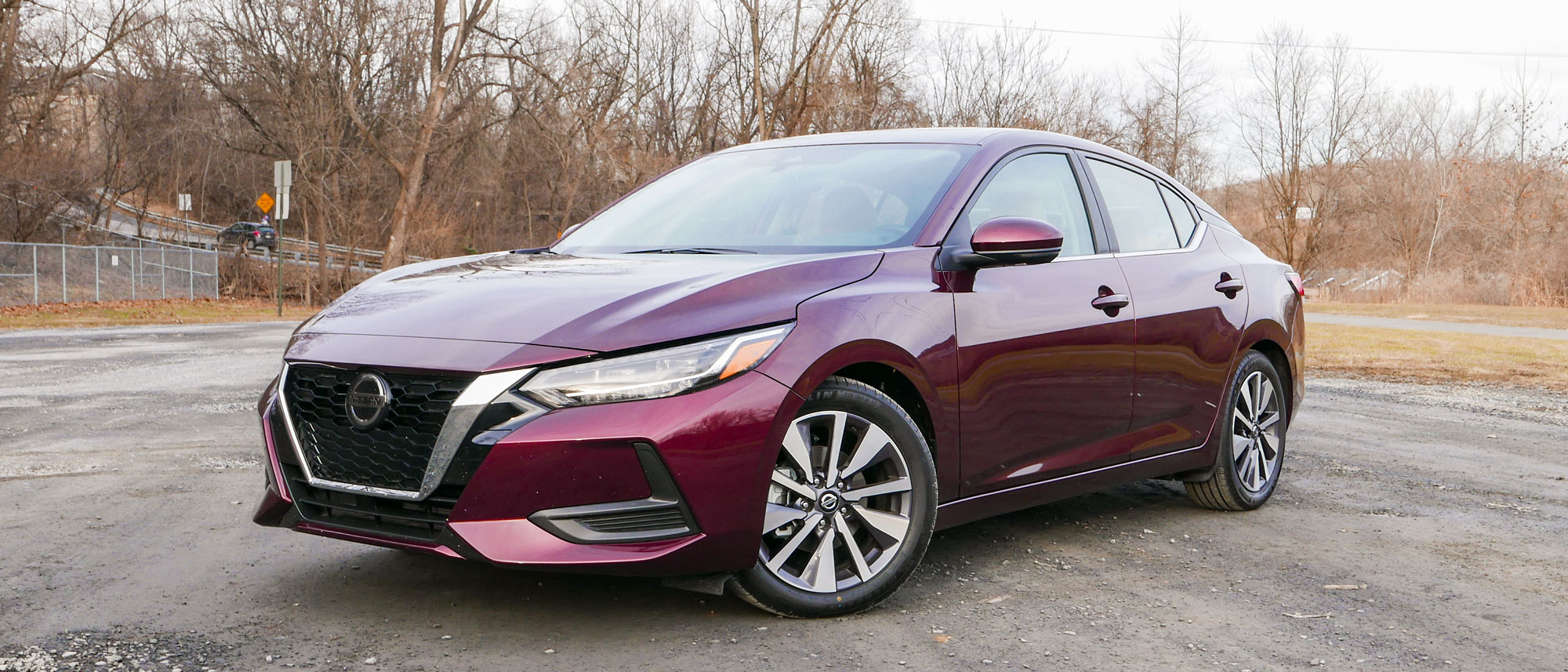Tom's Guide Verdict
The 2020 Nissan Sentra is a superb value with a sharp design, and it's an easy recommendation for anyone looking to get the most tech and luxury for the price.
Pros
- +
Much cheaper than the competition
- +
Compelling standard safety and tech features
- +
Attractive styling
- +
Beautiful interior
- +
Stable ride and handling
Cons
- -
Not especially powerful
- -
CVT can be a drag sometimes
- -
Not very fun to drive
Why you can trust Tom's Guide
The 2020 Nissan Sentra defies the conventional wisdom that nobody wants a sedan. The big three U.S. manufacturers have all but nixed conventional three-box passenger cars from their lineups and rivals are finding ever more ways to slice the crossover pie.
Modern car buyers supposedly want a ride with furniture-hauling, light off-roading aspirations — or at least the appearance of being able to accommodate such adventures. And the new 2020 Nissan Sentra doesn't fit that description.
Price: $19,090-$23,600
Engine options: 2.0L inline-4
Horsepower/Torque: 149 hp @ 6,400 rpm/146 lb-ft @ 4,400 rpm
Transmission options: Continuously variable
MPG (City/Highway/Combined): 28-29/37-39/32-33
Maximum seating capacity: 5 passengers
Curb weight: 3,047-3,084 lbs.
Dimensions (Width x Height; Wheelbase): 71.5 x 56.9 in.; 106.8 in.
Take one look at Nissan's revitalized passenger car lineup, and it's clear that the somewhat beleaguered Japanese automaker has not gotten that memo. Nissan fundamentally believes in sedans; younger drivers want them, according to the company's data, and most buyers of all ages would at least consider them. And now that the Maxima, Altima and Versa have been totally replaced or refreshed, that leaves the Sentra — Nissan's bread-and-butter compact vehicle — due for a dramatic makeover.
And what a makeover it got. You'd never recommend the old Sentra to even your worst enemy; it was a tragic-looking penalty box with anemic performance and an interior with all the personality and comfort of your dentist's waiting room. But the 2020 Sentra is different. It's built on an all-new platform, with a massively stepped-up cabin, loads of tech and safety features that come standard and a continuously variable transmission you can actually live with. No, the Sentra still isn't the most spirited drive in the segment, but for the money, you can't beat it.
2020 Nissan Sentra price and availability
The 2020 Nissan Sentra begins at $19,090 for the entry-level S model. For that, Nissan's Safety Shield 360 suite comes standard, with automatic emergency braking and pedestrian detection, high beam assist, lane departure warning, rear cross traffic alert, rear automatic braking and blind spot warning. All Sentras also benefit from active ride control, intelligent trace control and vehicle dynamics control, all of which improve the car's ride and maneuverability in everyday driving conditions and emergencies alike.
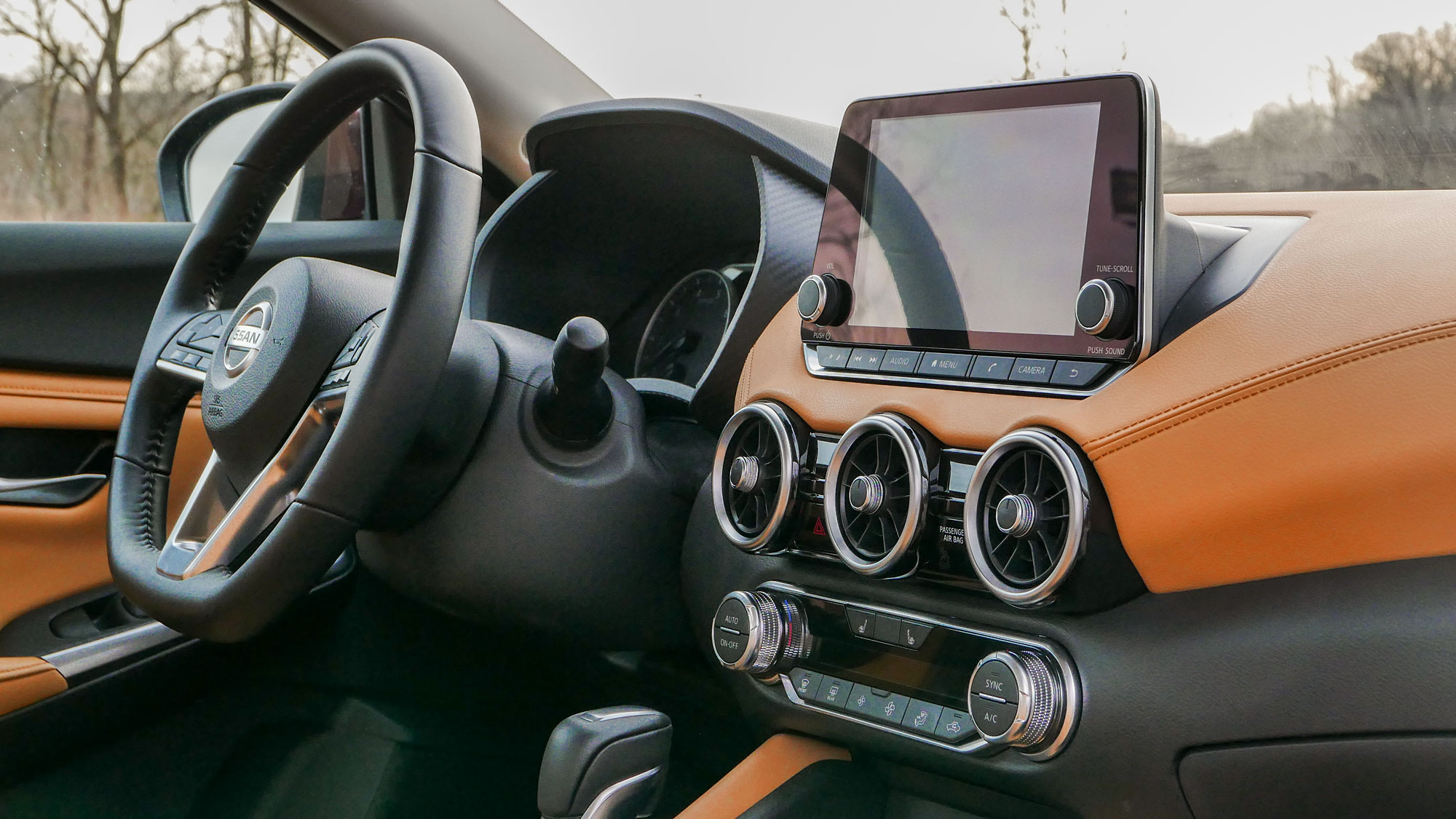
If you move up to the SV model ($20,270), the standard 7-inch infotainment display gets upgraded to an 8-inch touch screen with Apple CarPlay and Android Auto. You also get another 7-inch screen in the instrument panel, as well as dual-zone climate control, intelligent cruise control, a six-speaker audio system, remote start and a leather-wrapped steering wheel. The $21,430 SR model adds exterior accoutrements such as 18-inch rims and LED fog lights, in addition to a sport interior trim with orange stitching.
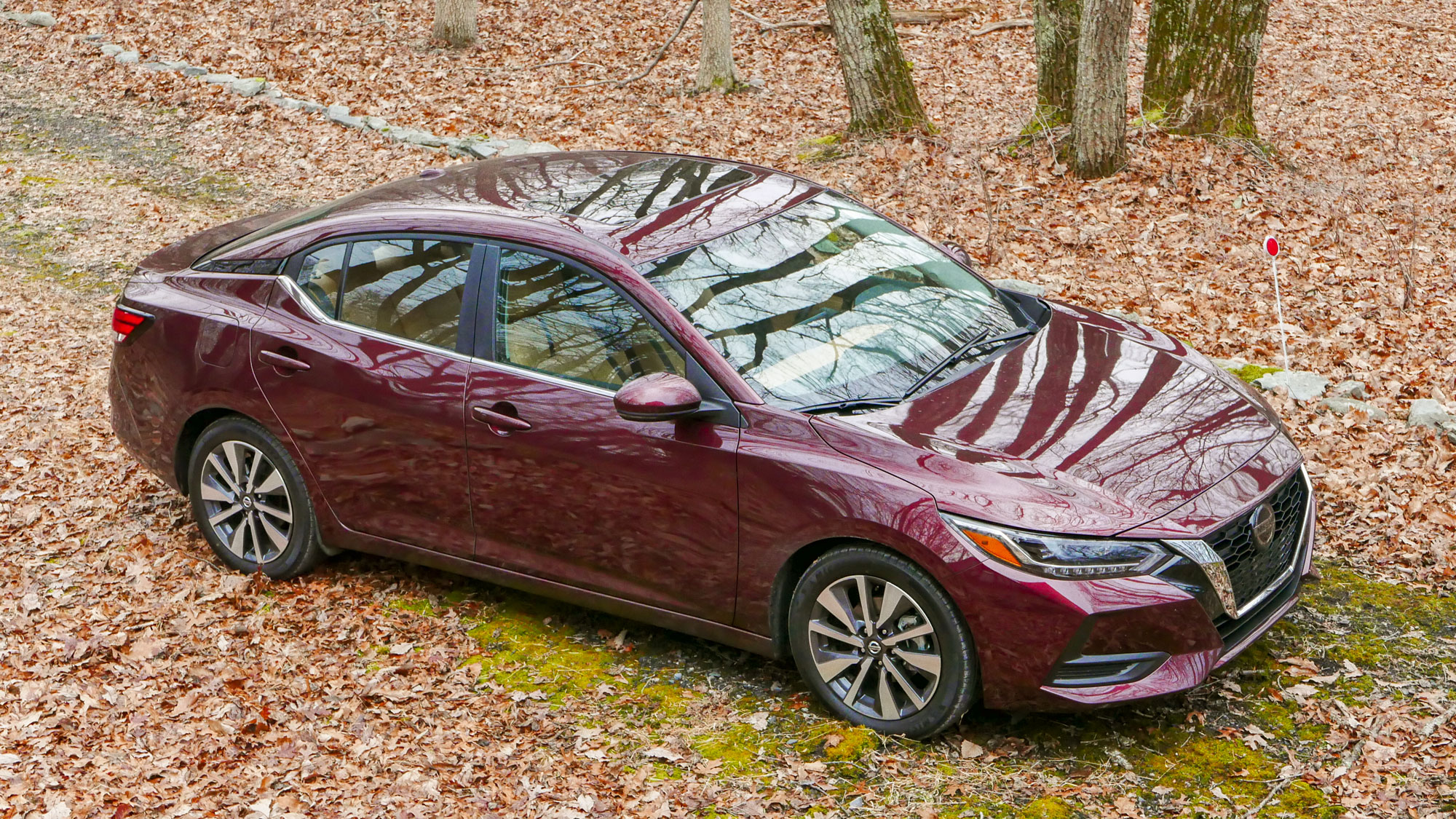
But I tested the SV model with the Premium Package, which tacks on another $2,460, for a total of $22,730. This, in my view, is the sweet spot of the Sentra range. You get a moonroof, an eight-way power driver seat that includes lumbar adjustment, quilted leather seats that look positively gorgeous (especially in the tan interior color) and heated front seats. If you need even more luxury, though, the range-topping $23,600 SR Premium model has a Bose eight-speaker audio system and an Intelligent Around View monitor, among other goodies.
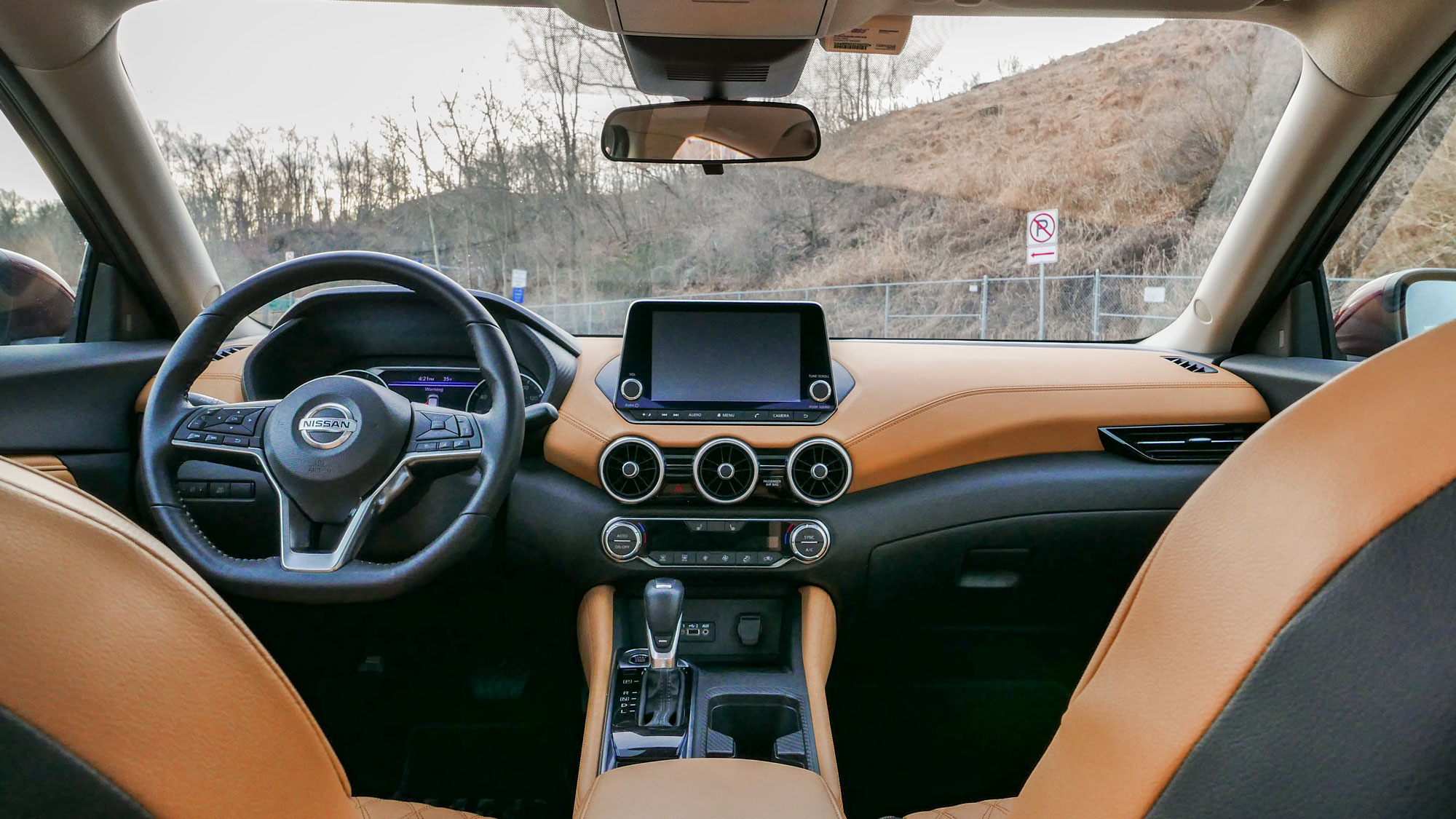
You may have noticed that I haven't discussed the powertrain yet, and that's because there's no choice, no matter how much you spend on your Sentra. It's a two-liter, naturally aspirated four cylinder that drives only the front wheels and produces 149 horsepower and 146 pound-feet of torque. That's good for about 29 miles per gallon in the city and 39 mpg on the highway, or 33 mpg combined, inside the S and SV variants. The slightly heavier SR reaches a combined 32 mpg.
2020 Nissan Sentra design and interior
Quick: Without Googling, try to imagine what the previous-generation Sentra looked like. If your mind's eye is anything like mine, you'll recall fleeting cues — tiny sofa caster wheels and oversize, bulbous headlights— but you'll struggle to picture a cohesive vehicle with any distinctive or desirable features. (At a certain point, probably sometime in 2013, I think we all collectively stopped noticing Sentras on the road.)
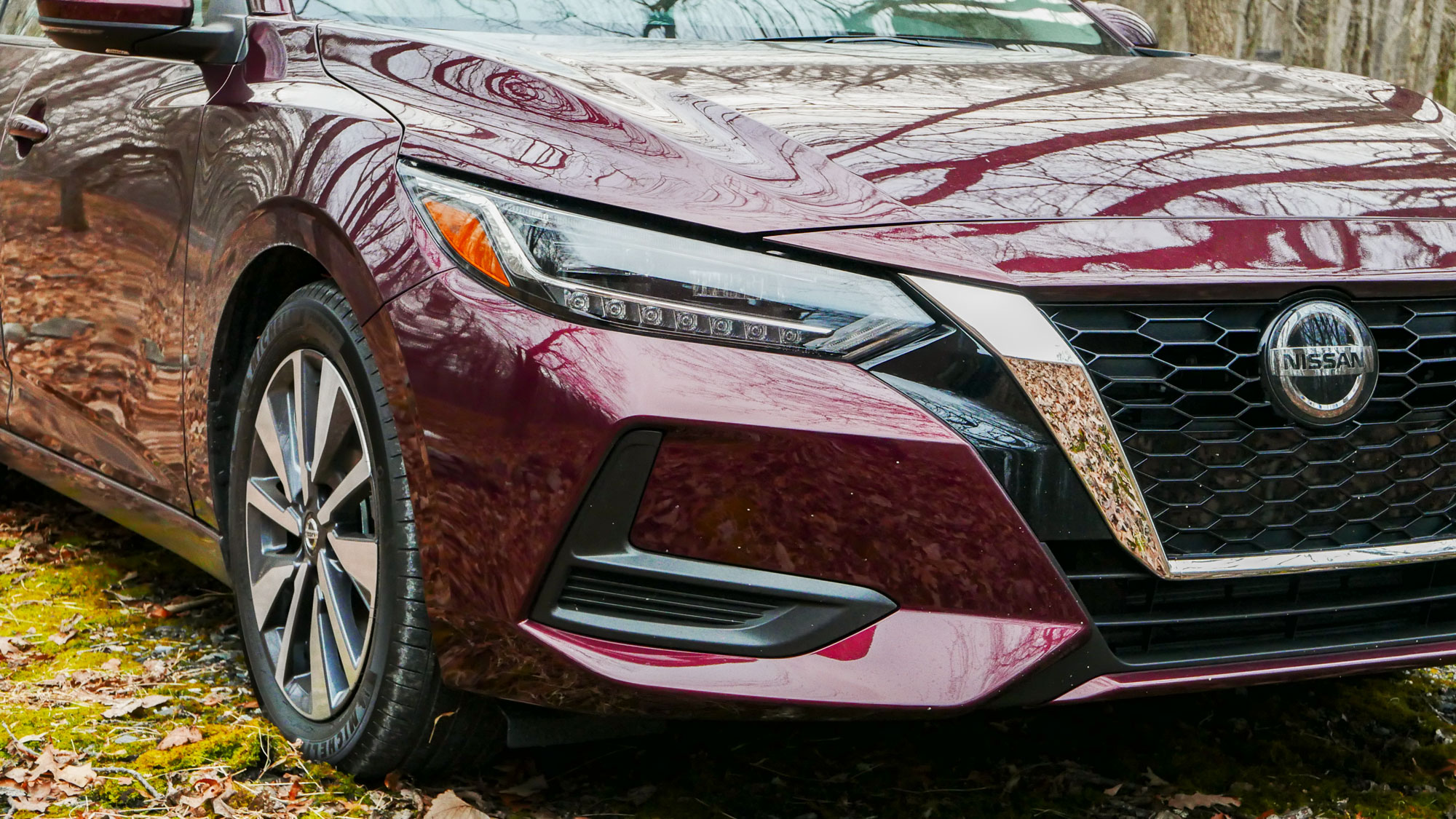
The new Sentra is significantly easier on the eyes. Are there better-looking compact sedans? I'd wager the Mazda 3 tops most critics' lists, but Nissan's latest example is a looker in its own right. The new car is 2 inches lower and wider, and it makes a difference.
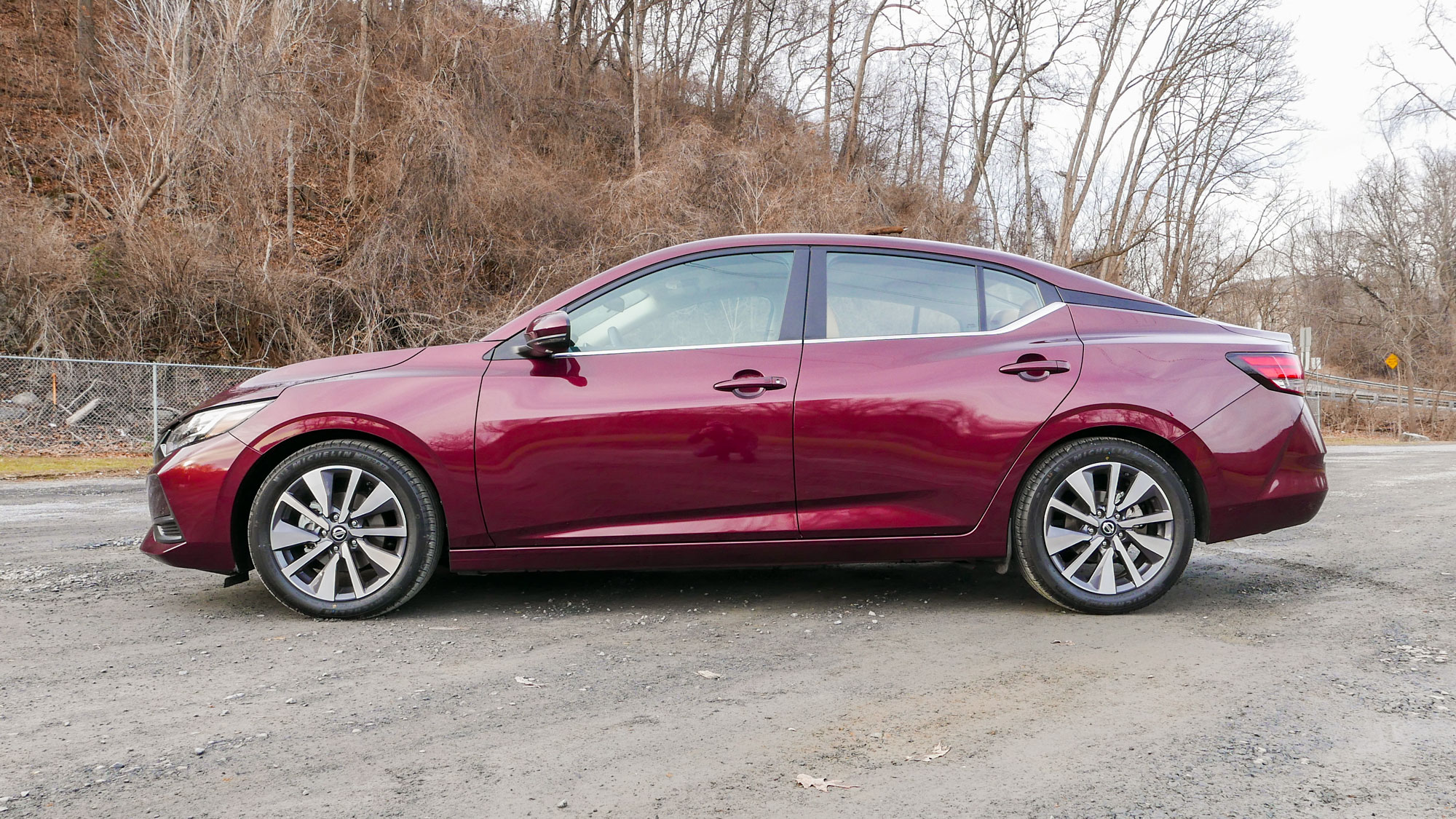
The word "athletic" gets tossed about a lot in automaker marketing materials concerning design, but the new Sentra sports powerful haunches above the wheel arches, a prominent beltline that cinches the profile of the car, low-slung headlights and taillights, and on some trim levels and models, a floating black canopy that contributes to a sleek aesthetic.
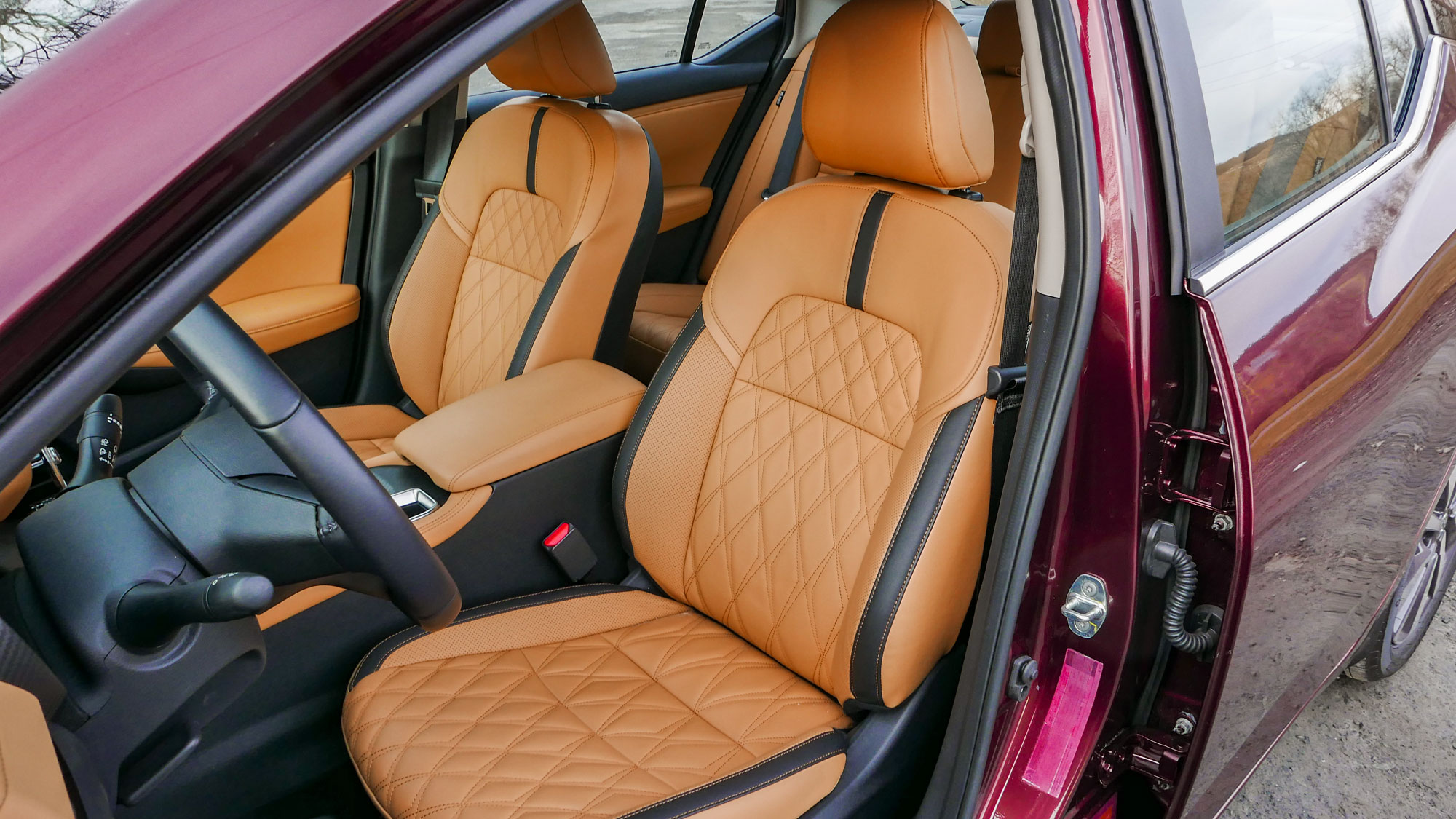
I won't say the new Sentra is going to turn heads — no car in this class really does — but it looks good, and you'd be proud to present it to your friends. And that style pours into the interior, which is flush with soft materials and solid switchgear that feels right.

Our test vehicle came in Rosewood Metallic — a sort of burgundy — and even though it wasn't the most exciting color, it absolutely sets off the tan, quilted leather that comes as part of the Premium package. That tan shade extends to the dashboard, beset with stitching that cascades into the three circular climate control vents below the infotainment display.
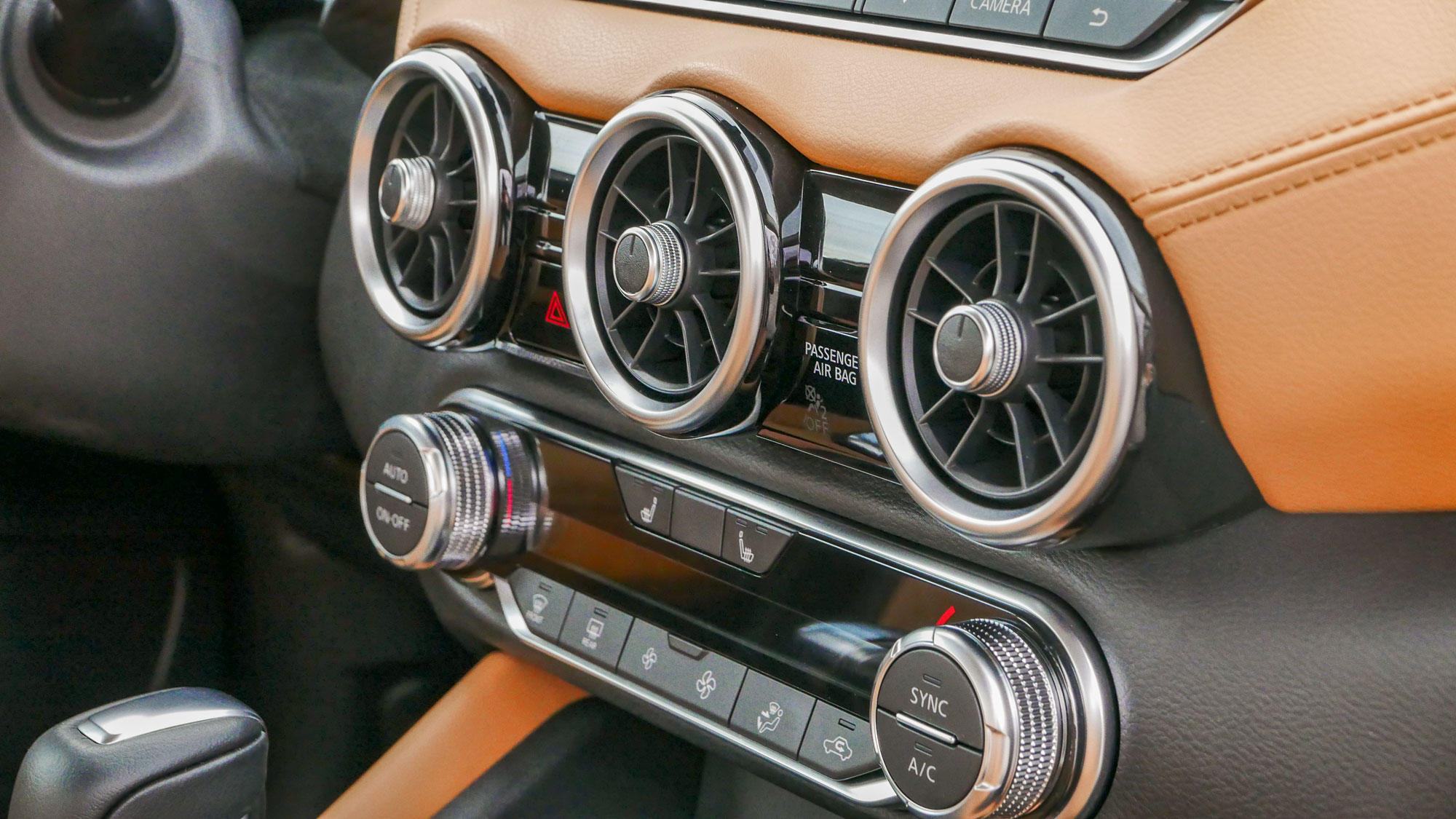
Nissan says these vents are inspired by similar vents in the GT-R, but I'd say they look better here, serving as the focal point of the whole interior and briefly causing passengers to forget they're sitting in a sub-$24,000 Nissan. (The facade will inevitably vanish once they see the scratch-prone piano-black plastics and faux matte carbon fiber around the door switches, but this is still a very nice place to be.)
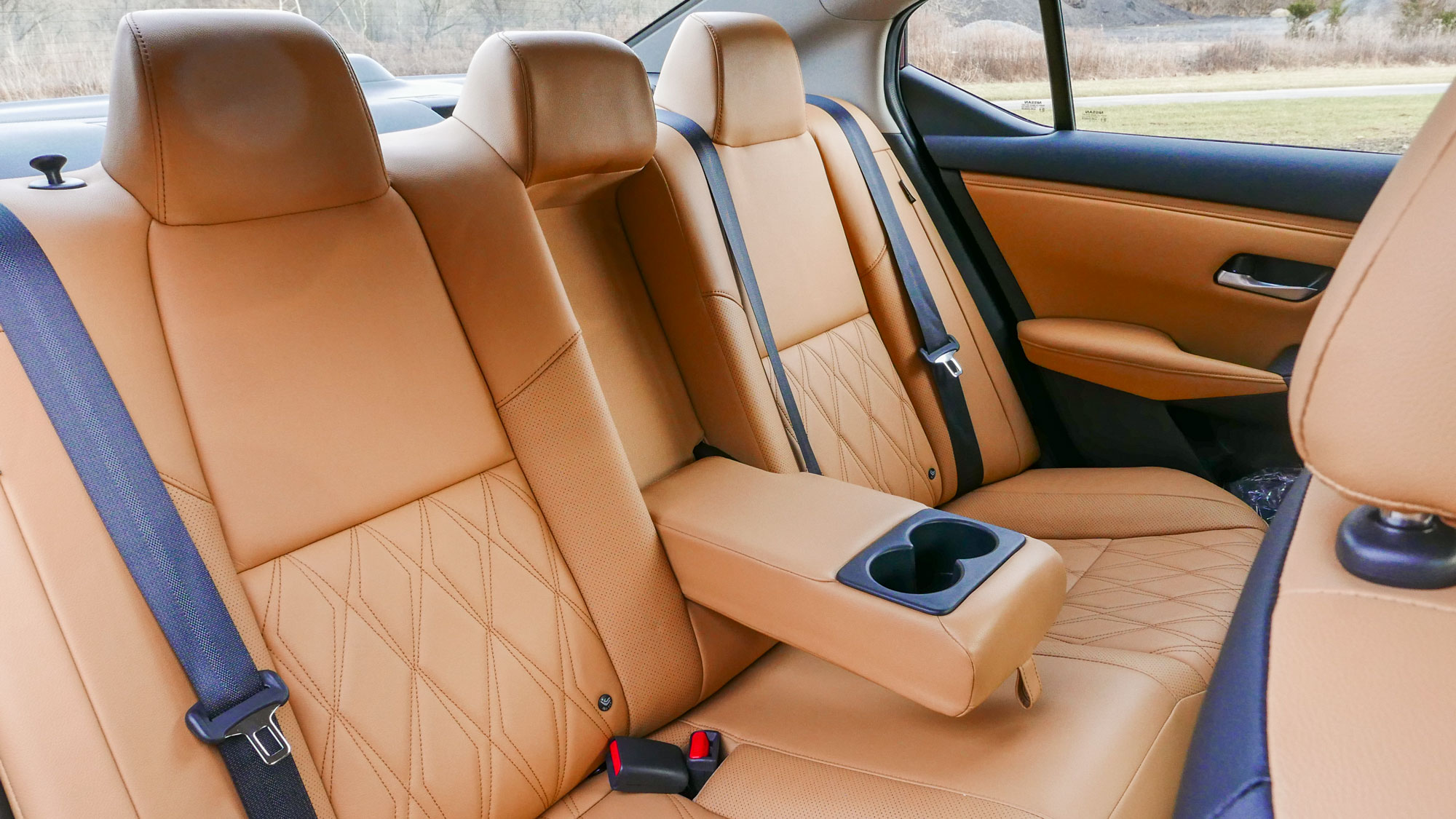
As for how the interior feels to sit in, that's a slightly less-rosy story. Nissan says it's lavished its trademark NASA-inspired Zero Gravity seats on the Sentra. Though they're no more or less comfortable than seats in most other compacts, I wouldn't say there's anything noticeably "zero gravity" about them. The bottom portion terminates at quite a low point, which leaves a lot of space between the bottom of your legs and the seat itself, contributing to a flatness and lack of overall support. And while the seats are not especially firm, they don't feel all that soft, either. Thankfully, backseat passengers were at least comfortable with the generous 37.4 inches of rear legroom.
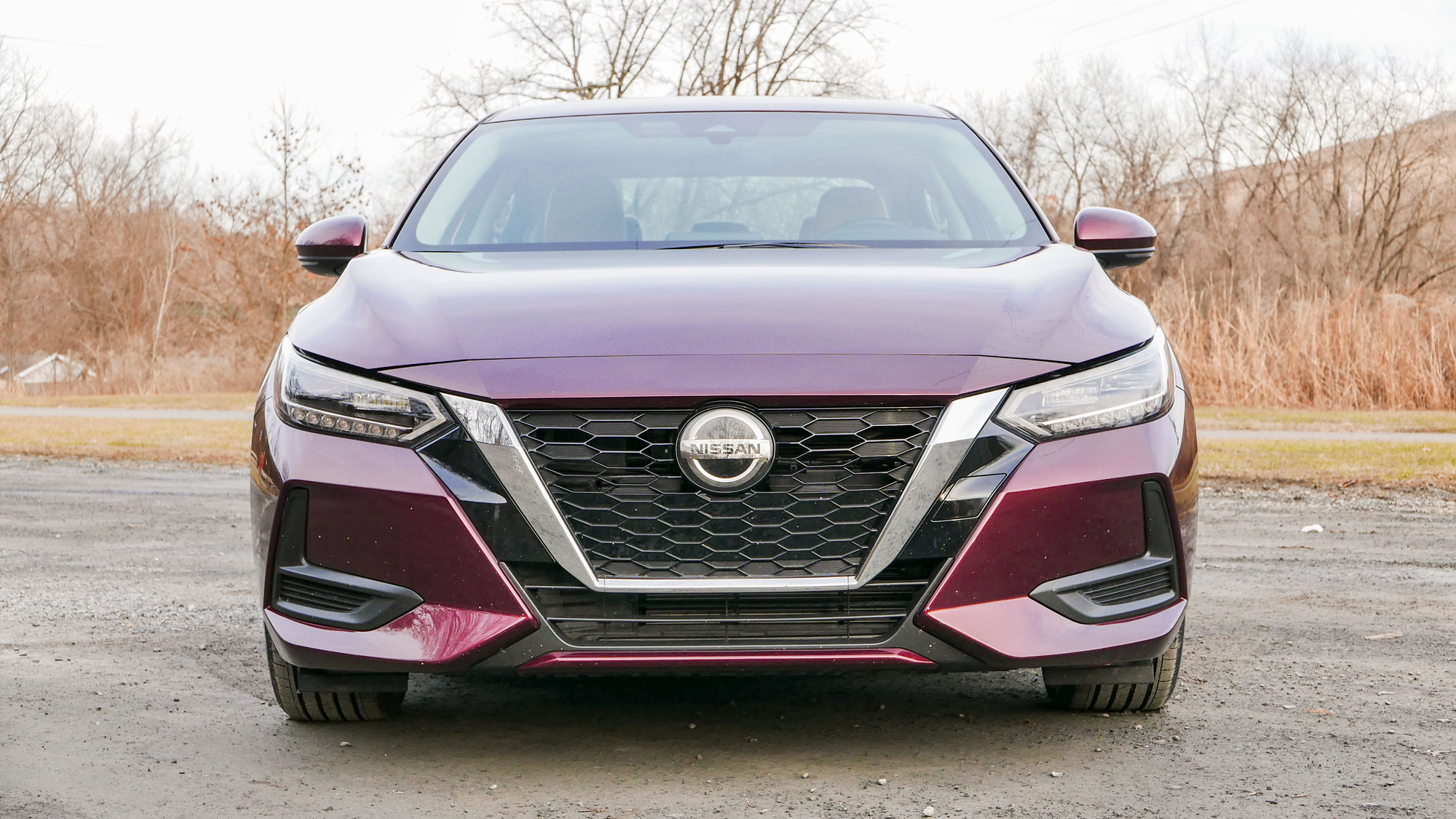
2020 Nissan Sentra performance and handling
The Sentra has never been the sportiest compact (save for the old SE-R Spec V). To Nissan's credit, the company has no fantasies about that, and so the 2020 model is about simple, comfortable cruising, with no more power or responsiveness than is really necessary.
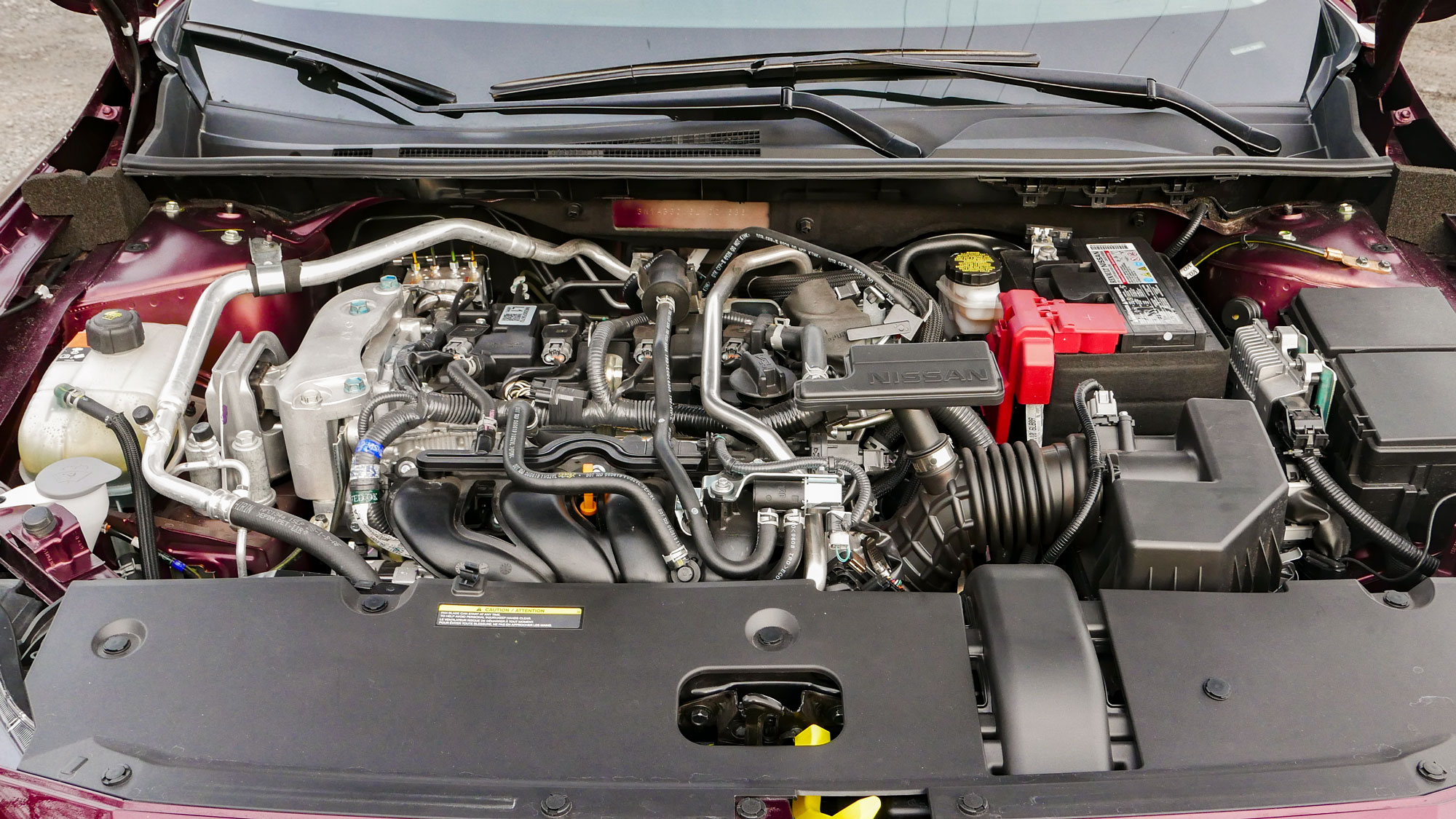
Rest assured, that two-liter, 149-hp four-cylinder engine might not seem adequate to move the Sentra's roughly 3,100 pounds. But Nissan's small sedan does make the effort when you put your foot down, so highway passes aren't laborious. Granted, the Xtronic CVT makes you well aware of how hard you're pushing it; any time you so much as breathe on the throttle, the revs resist for a second, then balloon up to about 5,000 rpm, at which point the characteristic CVT drone becomes pretty hard to ignore.
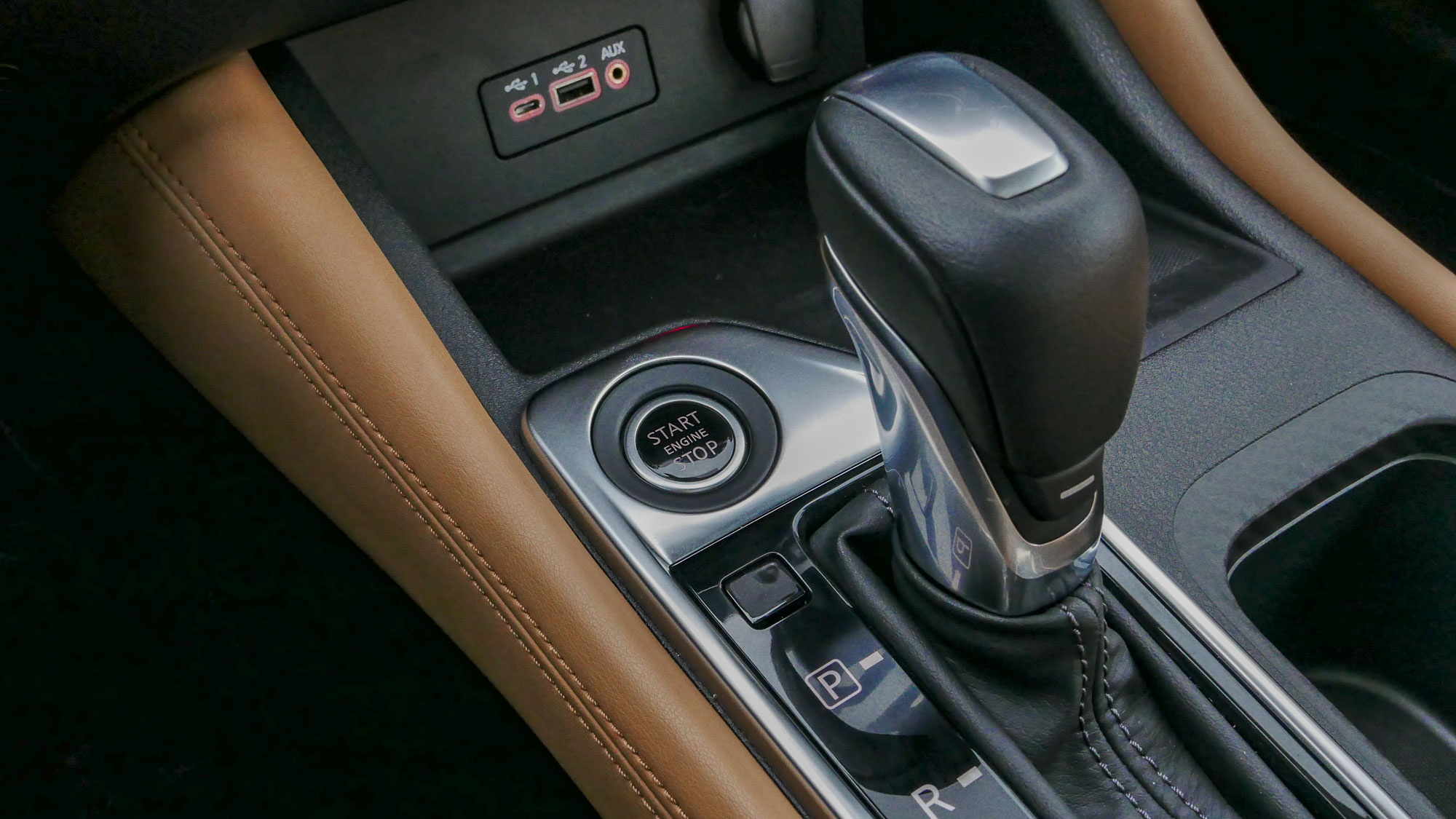
If you'd like less dillydallying and more action from the CVT, you can use the unlabeled button right below the top of the shift lever to activate Sport mode. (This is a weird place to find such a feature; the Sentra doesn't have any sort of fake sequential mode, so the whole act of touching the shifter at speed is never something you'd do anyway.) With Sport mode on, the CVT will hesitate less before punching those higher revs, though the difference isn't all that noticeable. Still, that's actually a compliment, because it means the new Sentra isn't so anemic that you need to whip it into Sport mode every time you want to attempt an overtake.
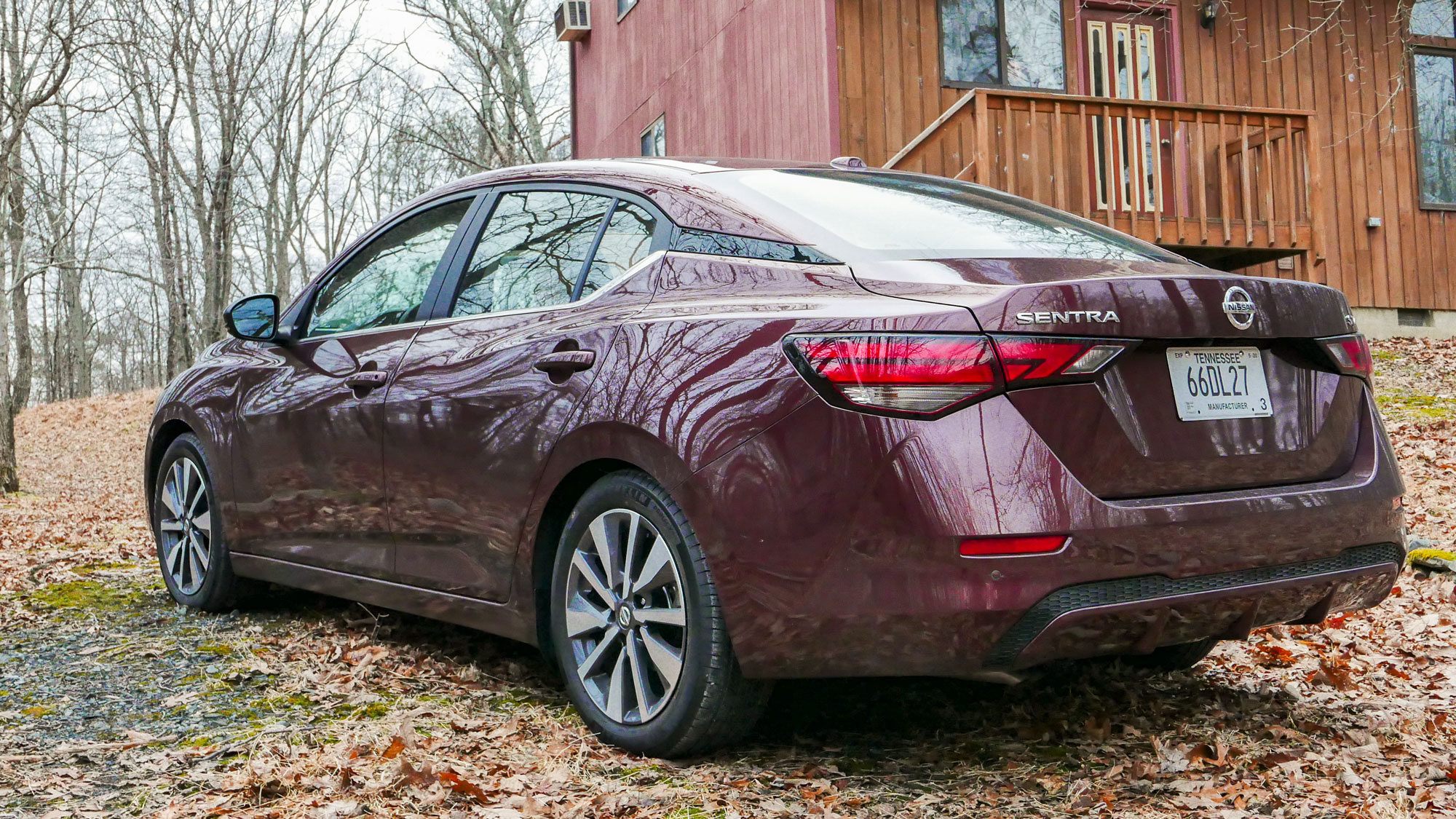
Make no mistake, though: The new Sentra is not a fast car, and it's no replacement for a genuine sport compact. You feel it in the handling too, as this sedan is responsive upon turn in and confident enough when things get twisty, though body roll is still obviously present. The steering is a bit heavy at lower speeds, but it's admittedly a welcome bit of heft. And the ride is firm without breaking your back. It all feels solid, thanks in part to a new multilink independent rear suspension (the first for this nameplate), but not like it especially loves to be kept on its toes. Nevertheless, that should be fine enough for the buyers Nissan wants to court.
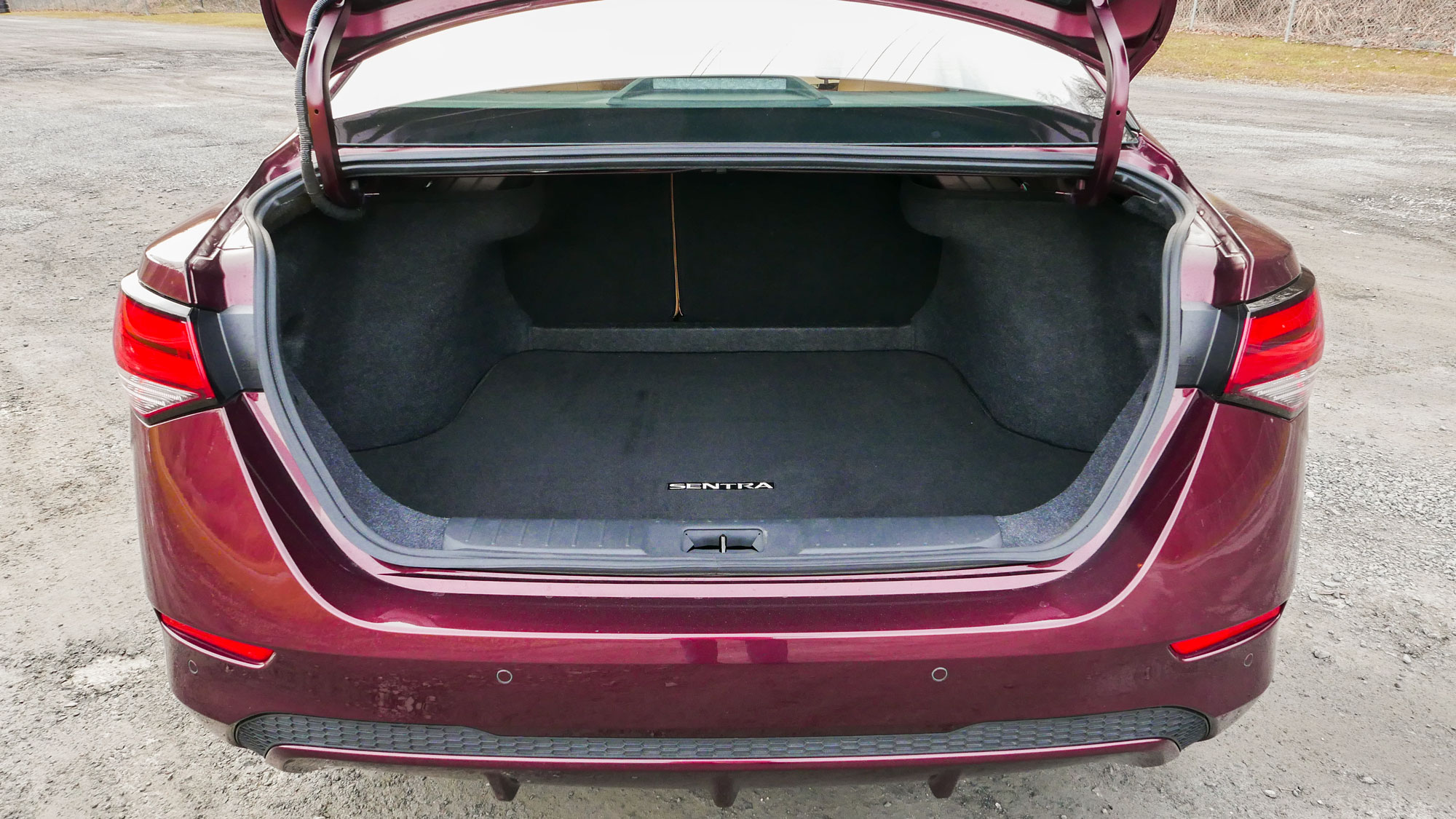
In fact, the only issue I really have with the Sentra's on-road character is the way it comes to a stop. It sort of lurches, rendering the braking force inconsistent and making you feel as if you have to constantly overcorrect the amount of pressure you're applying to the pedal. It's not excessively skittish or anything deal breaking, but it is annoying and somewhat flies in the face of the whole ease-of-driving theme Nissan is angling for with this car.
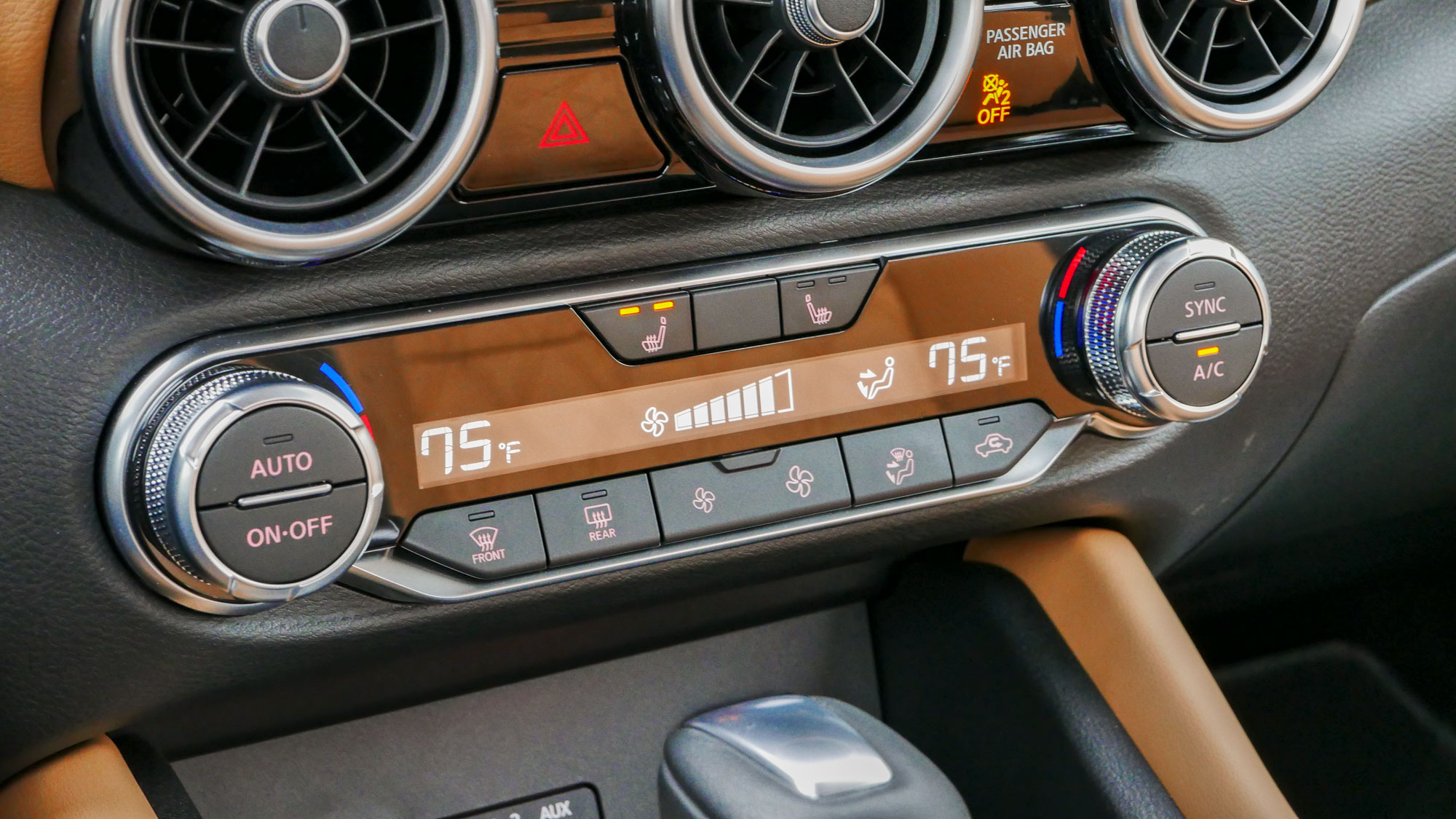
In terms of fuel economy, the Sentra mostly hit its target in the week I had it, hovering at about 32 mpg most of the time across a mix of city and highway driving (and, during some of that time, it was set to Sport mode.) That's a few ticks below manufacturer estimates for the Honda Civic (29-32/37-42 mpg) and the Toyota Corolla (29-31/37-40), both of which offer more-powerful engine options than the Sentra.
2020 Nissan Sentra tech features
The suite of tech features in our Premium package-equipped Sentra SV was comprehensive and one of the vehicle's main draws. Competing compacts force you to pay more for so much of what the Sentra gets standard, especially when it comes to safety.
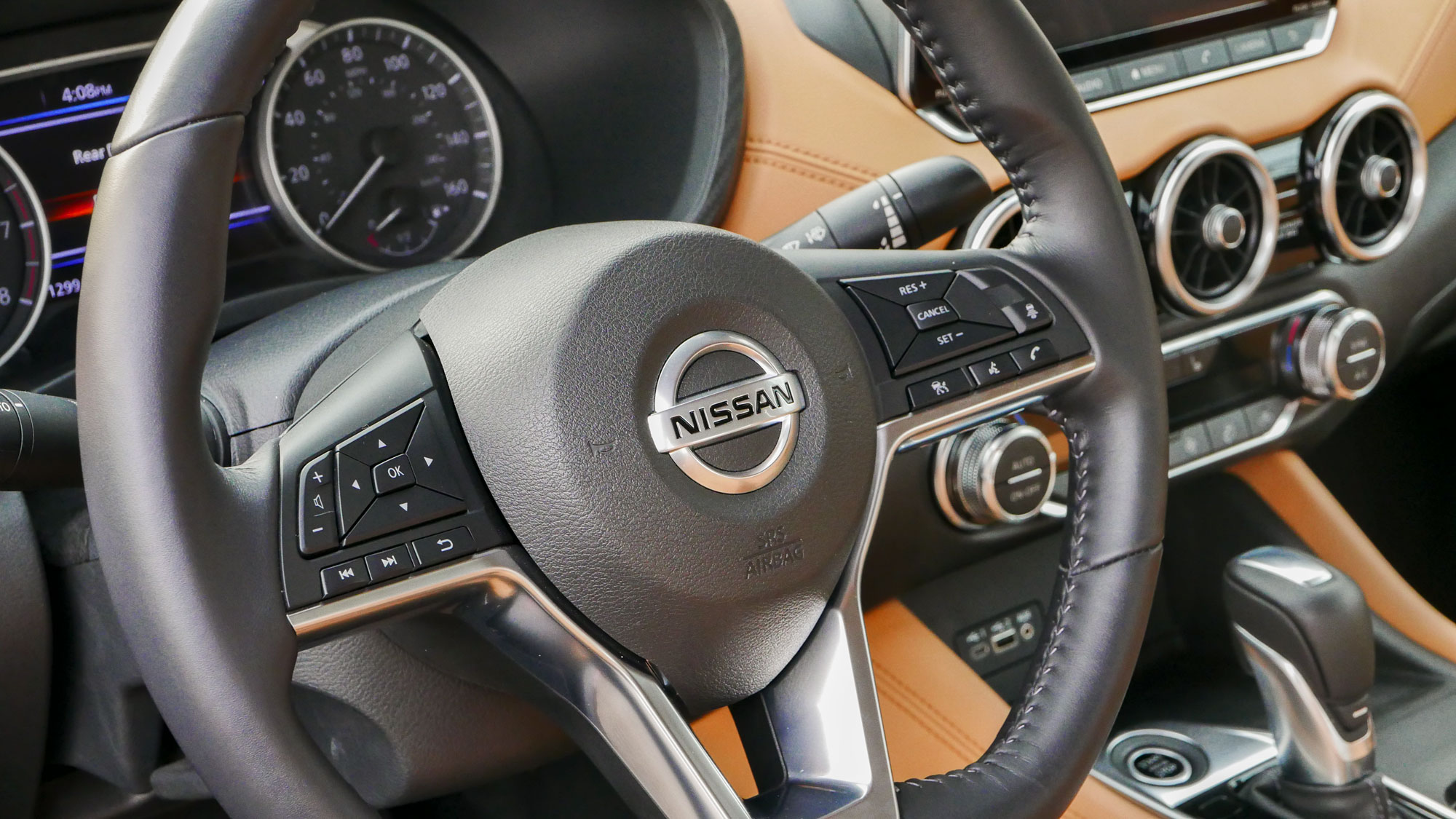
Blind spot warning is available on all Sentras; for the Corolla, you'll have to spend roughly $3,000 more for the appropriate trim level, and even then, you can't get rear automatic braking. The $20,270 Sentra SV also gets remote start, whereas that will set you back another $4,000 in Toyota's compact.
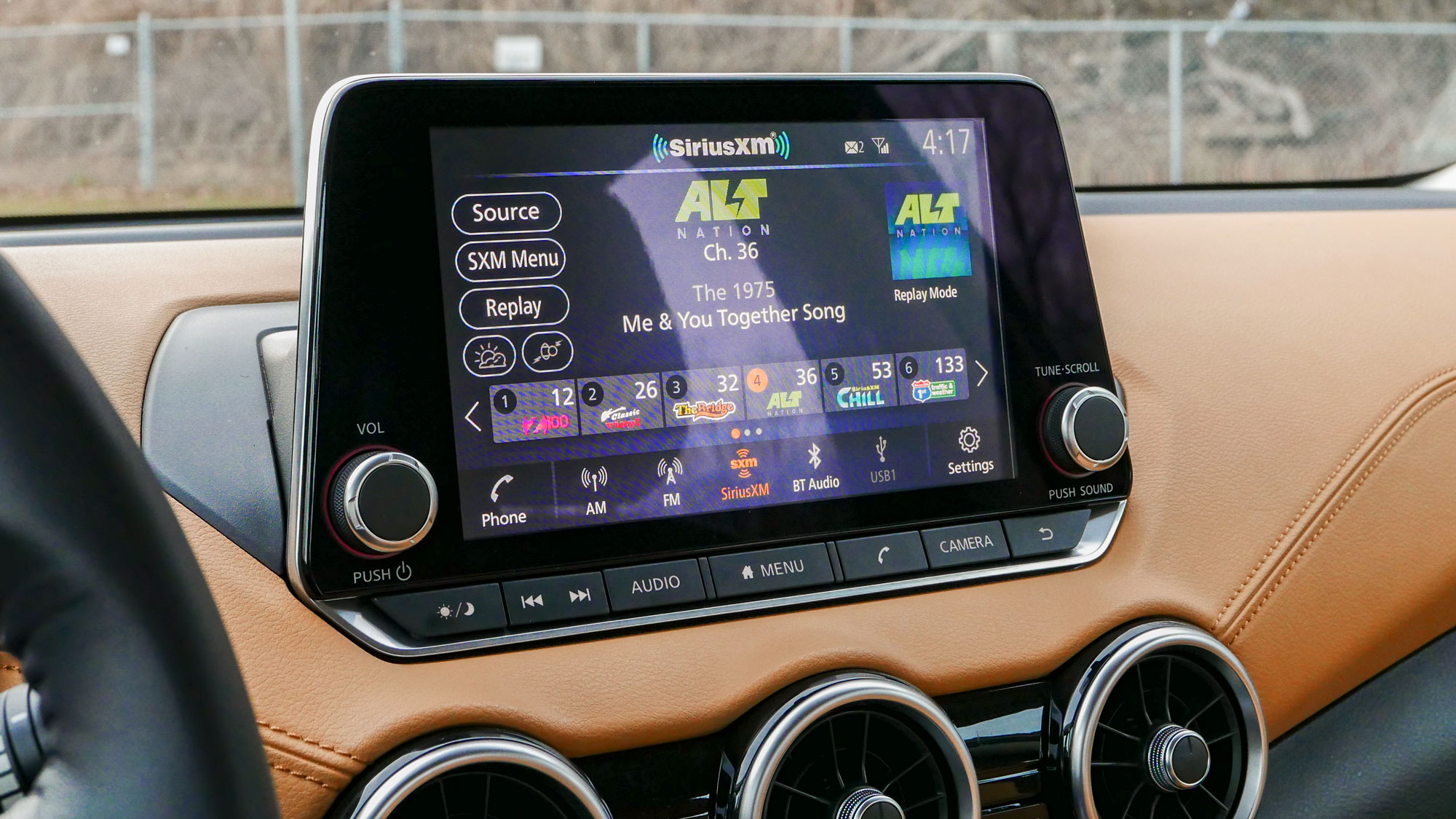
A similar story plays out with the Civic, where you'd have to drop an additional $2,000 for a touch-screen infotainment system — something that comes standard in the base Sentra. (Though, at least on the Civic, that screen is equipped with Android Auto and Apple CarPlay, which are unavailable on the Sentra until you upgrade to the 8-inch panel on the SV model.)
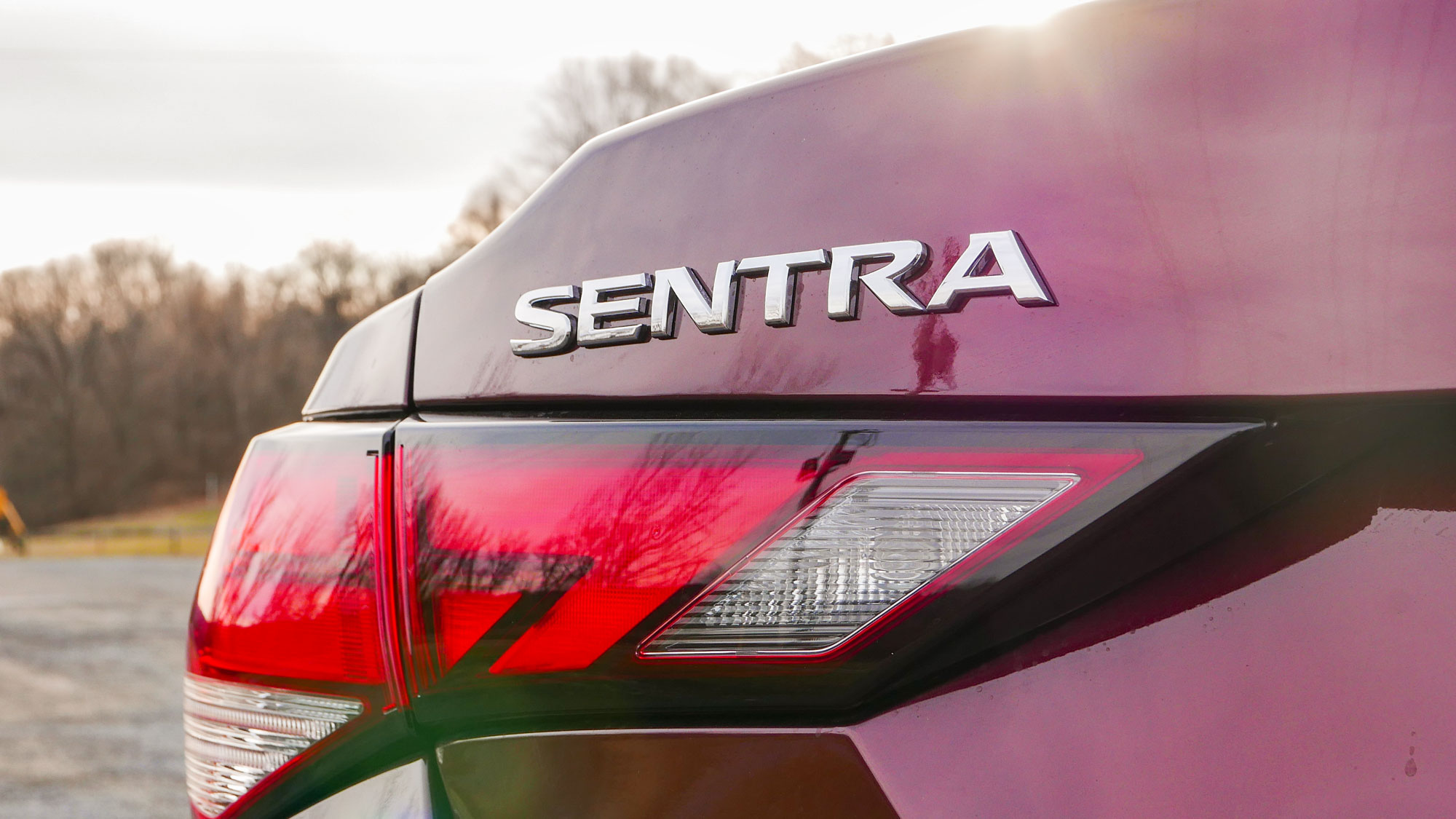
My lone gripe with the Sentra's assortment of intelligent driving aids is the lane departure warning. As in most cars, these alerts come in the form of a vibration through the steering wheel. I found the system was overeager to call me out on careless drifting within my lane, even when I was keeping things along the straight and narrow. If I were testing this Sentra longer, I'd have turned off that feature in a heartbeat.
Bottom line
The new Sentra isn't the best compact sedan out there, but it is a superb value and a sharp dresser. If interior fit, finish, comfort and tech features are your top priorities, this is the most compelling package on the market right now. Rivals will demand you pay thousands more for so many of the luxuries the Sentra offers generously.
On the flip side, there's one thing you won't get in the Sentra, and it doesn't matter how much you pay. If you want a compact that's going to truly put a smile on your face when the road opens up, this isn't that car. The Sentra isn't slow, but it isn't fast, either, and it's not agile enough to keep you inspired behind the wheel.
That's OK, though; not everybody needs that. And especially if you're coming from an older vehicle, the 2020 Nissan Sentra will more than suffice; it will delight you.
Adam Ismail is a staff writer at Jalopnik and previously worked on Tom's Guide covering smartphones, car tech and gaming. His love for all things mobile began with the original Motorola Droid; since then he’s owned a variety of Android and iOS-powered handsets, refusing to stay loyal to one platform. His work has also appeared on Digital Trends and GTPlanet. When he’s not fiddling with the latest devices, he’s at an indie pop show, recording a podcast or playing Sega Dreamcast.
